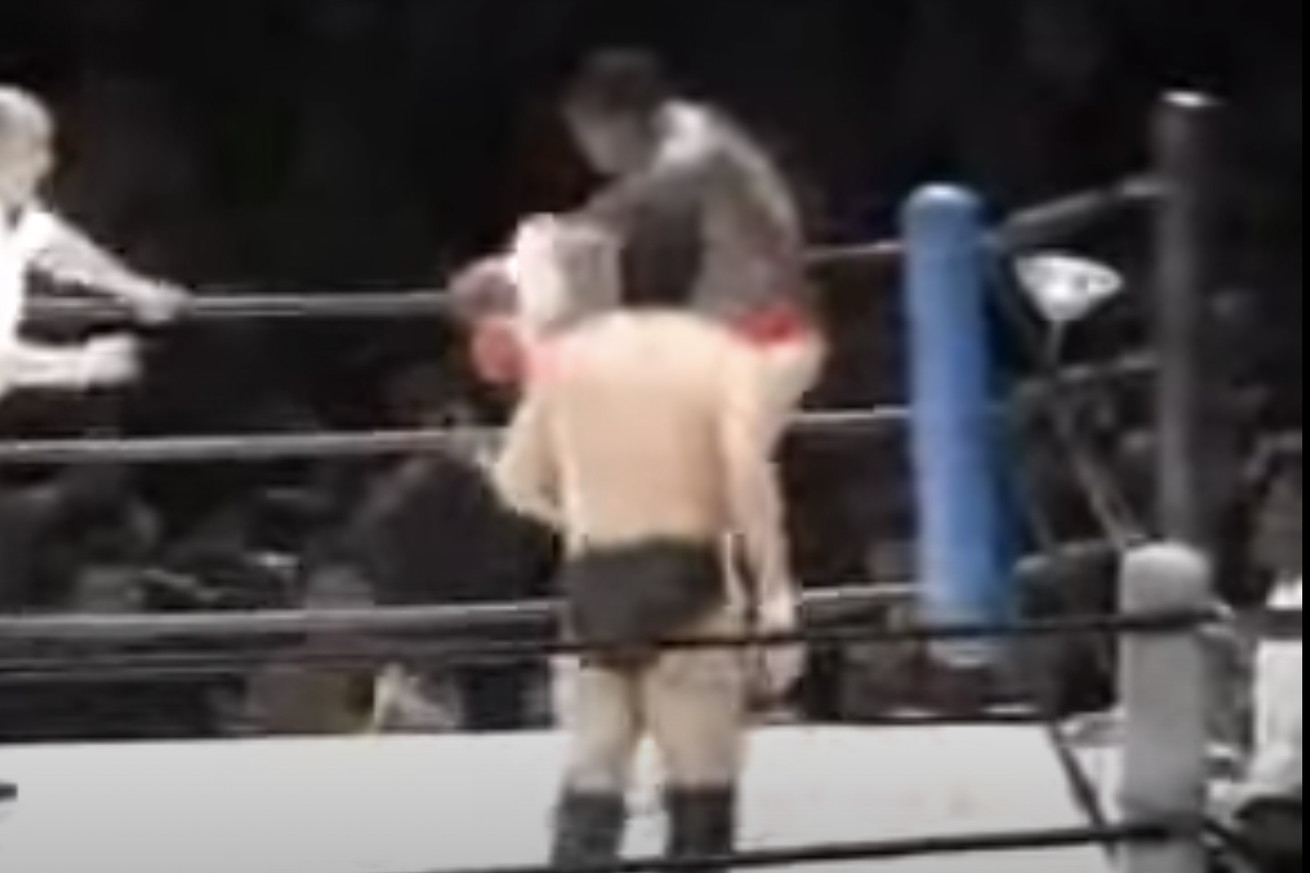It was supposed to be an easy win. In the end it was anything but.
Trevor Berbick stepped off his plane in Tokyo expecting an easy payday. The former WBC World Heavyweight Champion was in town for a one-off fight against a professional wrestler under kickboxing rules. Sure, it wasn’t Berbick’s main discipline, but this was a fake fighter — how difficult could it be?
Little did he know that he’d soon be doubled-over in pain, clutching at his knee, before escaping the ring in terror before the beating got even worse.
The UWFi was a short-lived experiment in Japan in the early 1990s. It was designed to showcase the legitimacy of Japanese “strong style” wrestling, which featured true striking alongside pro wrestling grappling, as a way to blur the line between reality and fiction. At a time where WWE (then WWF) was leaning more into entertaining children with bright, colorful characters, Japan was trying to maintain the realism of professional wrestling.
Berbick was booked to come to Japan and fight against a professional wrestler in a one-off bout as the main event of “UWF-I Kakutogi Sekaiichi” at the legendary Ryōgoku Kokugikan sumo hall. It would show the world the power of Japanese strong style, and turn the heads of those who believed wrestling was fake.
Berbick was no slouch. This was a man who beat Muhammad Ali in the final fight of Ali’s career. He took Larry Holmes to the limit in 1981, losing after 15 rounds by decision. When Berbick finally won the WBC Heavyweight title in 1986 it seemed he was poised for a long run … until he ran into a 20-year-old Mike Tyson. Berbick was a direct bridge from Ali to Tyson, and even though he wasn’t at his peak when he went to Japan, he was still a big deal.
One problem: Berbick really didn’t do his homework on his opponent. Nobuhiko Takada began professional wrestling in 1981, and quickly caught the attention of New Japan Pro Wrestling’s Antonio Inoki. Takada became Inoki’s right hand man, carrying the torch of strong style around the world. Takada wrestled extensively in Japan and Canada, working against the likes of Bret Hart, Dynamite Kid and Davey Boy Smith — stunning his opponents with brutal leg kicks and adherence to realism. Working against Takada wasn’t just a lesson in wrestling, but survival.
Trevor Berbick stepped into the ring On December 22, 1991 and it went off the rails immediately.
In the first 20 seconds Takada delivered his first leg kick and Berbick had no idea what was happening. He appealed to the referee to force Takada to only kick above the belt, but to no avail. The third leg kick sent Berbick reeling into the corner, clutching his knee and losing his balance.
The barrage continued to Berbick’s calves and thighs, forcing him to grab the ropes for stability while he screamed about the kicks being too low. It wasn’t long before he got his wish for a higher kick, as Takada blasted him in head when Berbick dropped his gloves to protect his legs.
Three more kicks and it was over. Berbick escaped the ring and the area, quitting on the bout — realizing he absolutely couldn’t handle the barrage coming his way. In the lead up to the fight Berbick boasted that if Takada kicked him it would “be World War III,” but in the end he ran like a scared child.
The incident sparked tremendous controversy. Berbick claimed he was the victim of a bait and switch, saying he was assured the fight would be conducted under international kickboxing rules, which didn’t allow kicks below the waist. The problem with this defense was that Berbick clearly wore leg protectors in the fight, which would indicate that he at least had some understanding he’d be kicked low.
UWFi officials said that they repeatedly explained the rules of the fight to Berbick, who didn’t want to listen to the details. This falls in line with commentators at the event, who were awestruck that Berbick would take offense to being kicked low.
It didn’t change the outcome either way. A decorated boxer went to Japan thinking he’d KO his opponent in a few seconds, and instead was left running on hobbled legs out the door.
Takada would eventually move to the PRIDE fighting championships in MMA, but by the time he entered in his 40s he was too old to have any kind of effect. He remains a legendary figure in pro wrestling, and one of the most influential individuals on shaping the sport in the country.
The next time someone tells you that all wrestling is fake, show them the time a boxer ran in terror from some leg kicks. It might make them think twice about slamming the sport.













